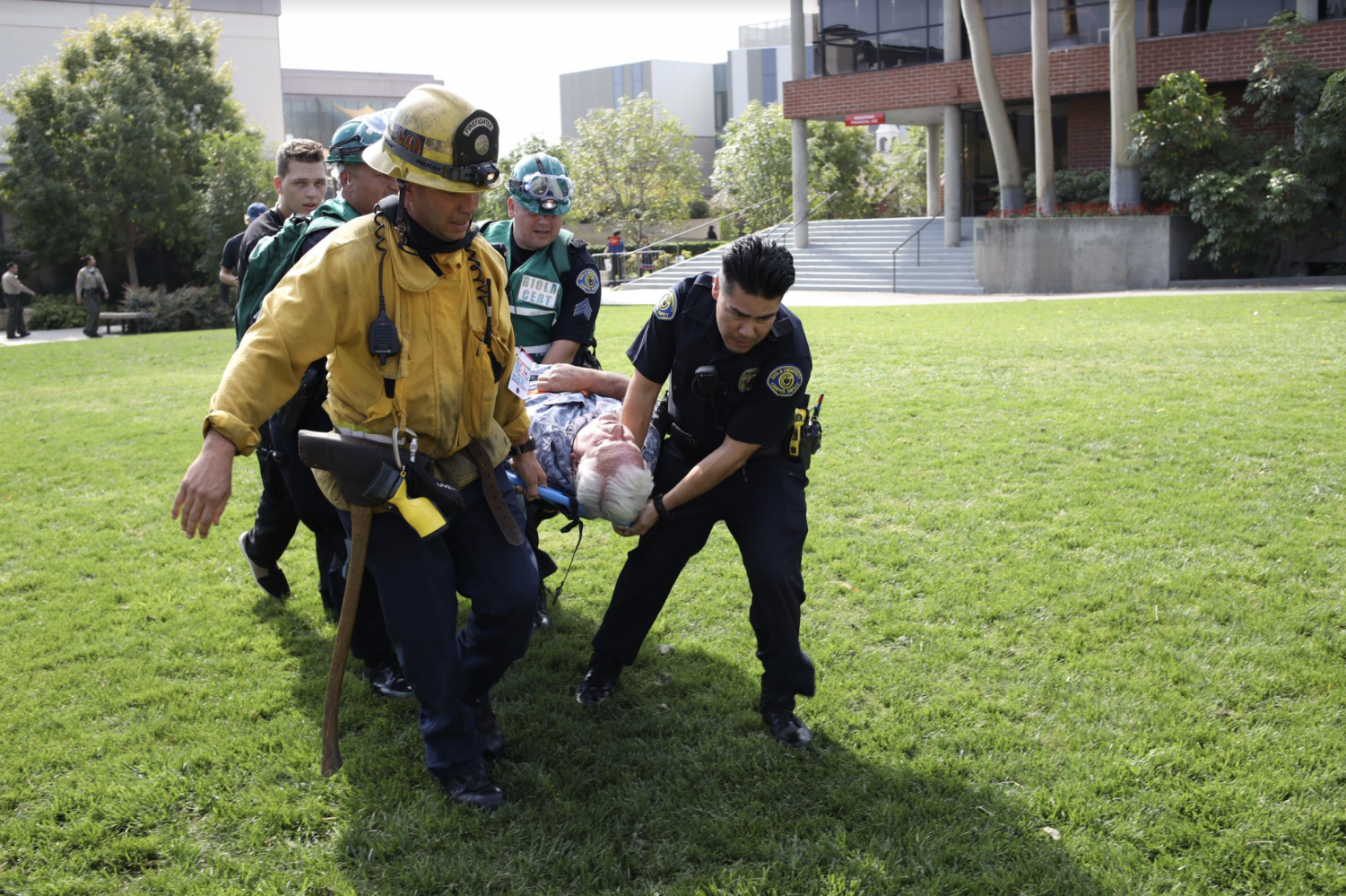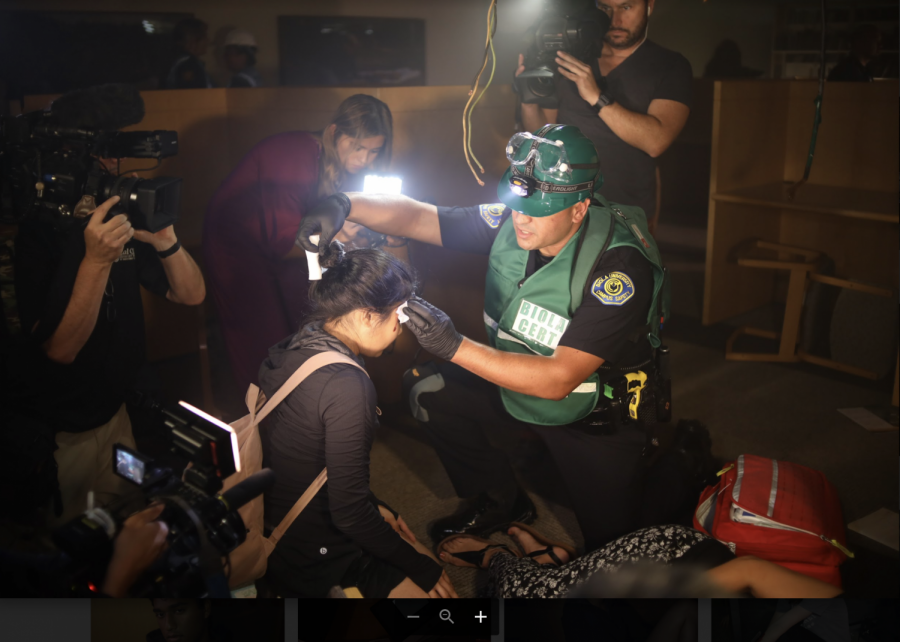After a loud rumble came out of the speakers of the library, green vested emergency responders rushed down the stairs to the bottom floor. As flashlights were shone into the darkness, injured victims were found screaming and crying for help in the foggy basement of the library.
On Thursday, Biola was the epicenter for the Southern California 2019 Great ShakeOut, an earthquake simulation that aims to prepare all Southern California residents to be able to protect themselves from an unpredicted earthquake. Campus Safety, the Los Angeles Fire County Department, Los Angeles Sheriff’s Department and the La Mirada/Norwalk Community Emergency Response Team united with student actors, nursing students and the psychological first aid team from Biola to simulate an earthquake situation in the library and on Metzger Lawn.
STATE OFFICIALS VISIT BIOLA
The event opened with a press conference, during which community leaders from Biola, the cities of La Mirada and Los Angeles, the federal government, and multiple California state agencies, including the governor’s office, spoke to media crews from several local and national television stations. Among the speakers were California State Sen. Bob Archuleta, La Mirada Mayor Steve DeRuse, and Kevin Miller, who represented Gov. Gavin Newsom, all underscoring the importance of earthquake preparedness for Californians.
“This is the 35th year the La Mirada has participated in the big [Southern] California ShakeOut,” DeRuse said. “You know, if you’re not prepared, you’re guaranteed for failure and when it comes to public safety, failure is not an option. We have to be prepared, we have to do these exercises [and] we have to be a part of this so our community is safe and sound.”
Shortly before the simulation, student actors stepped into their role as injured earthquake victims. Roleplayers scattered around the library basement, sprawled on the floor and were huddled by overturned chairs. Some had fake wounds that replicated injuries caused by falling furniture or shattered glass that often accompany a real earthquake.
EMERGENCY TRIAGE
Led by Campus Safety Chief John Ojeisekhoba, the exercise began at 10:17 a.m., simulating a 7.1 magnitude earthquake. After a short period of rumbling and crackling noises, CERT teams geared up and entered the library. The responders dispersed throughout the basement to respond to cries from scared and injured students. Team members spoke calming words to participants as they bandaged wounds and administered first aid, then tagged each victim to denote their level of injury: minor, delayed or immediate.
Meanwhile, Biola’s medical response team, which consisted of student nurses, set up green, yellow and red tarps, which corresponded with the tags given to victims.
The simulation allowed Biola emergency response groups the opportunity to experience a real earthquake, practicing what they’ve prepared for.
“It was all our triage skills, all our assessment skills put to the test,” said senior nursing major Sarah Greco. “When it’s really stressful, when the heart rates go up and people are screaming, what are you going to do? It was stressful, but I think it was great practice.”
Furthermore, it allowed student actors to experience the earthquake from the victim’s perspective.
“Everything that they set up in the library was very realistic,” said senior computer science major Jiahui Jiang. “They darkened the room, they had all the fog going [and] they had everything prepared just like an earthquake. It was a really good experience to train myself for real earthquakes. During an actual earthquake, I would [now] know what to do and how [to] ask for help.”
PREPARING FOR THE WORST
After the simulation, they held a debrief where Biola, local and state leaders expressed how important the exercise was. While many saw the simulation to be a success, Chief Ojeisekhoba still says Biola can certainly learn from the exercise to better prepare for any future earthquakes. “We will go back, analyze data and feedback from evaluators,” Ojeisekhoba said. “We brought evaluators to evaluate how we did, take the feedback and set the tone for how we will improve.”














